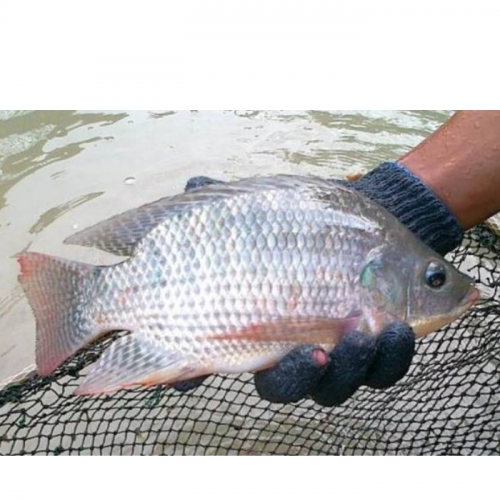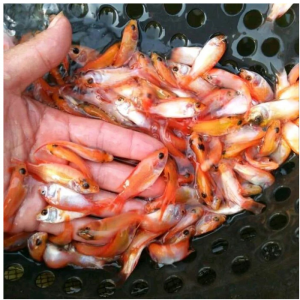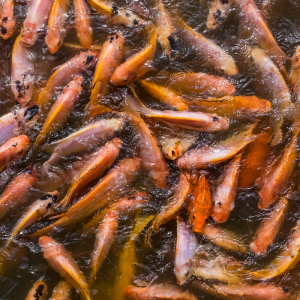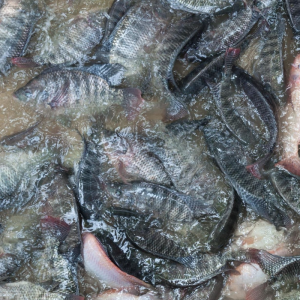
Prevention and Treatment Of Streptococcal Disease in Tilapia
| Mon, 22 Feb 2021 - 17:31
Reason
Streptococcal disease is caused by Streptococcus iniae bacteria and Streptococcus agalactiae is a Gram-positive bacteria.
Disease often occurs when farmed fish are exposed to stresses such as increased water temperature, oxygen levels in the water below allowable levels or fish are kept at high densities for long periods of time. Fish that are large in size (from 100 g to commercial size) are most susceptible to disease. The disease is in an acute stage with a peak death in the range 2-3 weeks when the water temperature is high. However, the disease can also be in a chronic stage when low water temperature can reduce mortality. The disease spreads horizontally from fish to each other (healthy fish eat sick fish, eat each other due to skin wounds ...) and can also spread from the environment to the fish.
Signs of illness
Because the pathogenic bacteria tend to attack the central nervous system of the fish, the diseased fish will appear lethargic and disoriented. Fish swim lethargic on the surface, some seriously sick fish swim on the surface and spin around and then die. The ankle is protruding on one side and the eye pulls a milky film. The inside of the gill cover is hemorrhagic, red but not rotten.
Anatomy in the abdominal sinuses contains a lot of fluid, intestinal bleeding and contains air bubbles. The presence of fluid in the fish's abdomen is a sign of an acute epidemic. This fluid can be seen flowing from the fish's anus. During the acute phase of the disease the bacteria rapidly travel to the blood system and spread to all internal organs. The main clinical signs associated with blood infection are hemorrhage, hepatitis, kidney, spleen, heart, eye, and intestinal tract. The spleen is often enlarged (swollen and swollen slightly).
In addition, when the fish is seriously infected, the disease also combines with other opportunistic bacteria that cause diseases of fish available in the environment such as bacteria Aeromonas spp in fresh water or Vibrio spp in brackish water.
Preventive measures
After each culture cycle, it is necessary to comply with the process of improving the pond as follows: Drain the water, remove the sludge to only 10 - 15 cm; Apply lime evenly all over the pond 10 - 15 kg / 100 m 2 ; Dry pond bottom for 7 - 10 days; Water supply to the pond is 50-60 cm; Color the pond water before stocking.
The water supply must be clean, the water must be through a fine filter net to avoid insects, trash fish and natural perch in the pond. Before bringing the fingerlings to the pond to bathe the fish in salt solution (NaCl) with the concentration of 2-3% for 7-10 minutes.
Environmental management of water: Every 2-3 weeks / time Air lime water pond with volume falls are 2-3 kg / 100 m 3 . Change water periodically every month about 30 - 50% of the water in the pond. Add a rain sprayer or a water fan to create oxygen for the pond. Using bio-products such as: EM, EMC helps the pond to stabilize water quality, improve the bottom, and limit the growth of harmful bacteria. The period of June and July every year is the time when streptococcal disease usually occurs on tilapia, so it is necessary to use BKC, TCCA to drop evenly all over the pond once a month to kill bacteria.
Feed management: Feed the fish in accordance with 4-6% of the fish's weight and gradually decrease in the following months. Industrial feed must ensure food hygiene and safety; Not infected with Salmonela, Aspergillus flavus , Aflatoxin toxin, no antibiotics, banned chemicals. Periodically supplement Vitamin C to strengthen fish's resistance. In addition, regularly observe the water level in the pond to adjust enough according to regulations. When the fish reaches 300 g / fish, it is necessary to maintain the amount of dissolved oxygen> 3 mg / l. Track the weather, the activity of the fish to adjust the amount of food accordingly.
Treatment
When streptococcal disease appears on tilapia, the following treatment regimen should be followed:
Reduced feeding: During an outbreak in an acute phase, partial food reductions or a complete reduction in feed can help control and reduce mortality. One of the explanations for this is that bacteria are present in water and favorably enter the body by food.
Decreasing stocking density: As mortality increases, the reduction in stocking will help reduce the stress and transfer of pathogens in the fish population. Always keep dissolved oxygen at optimum levels by using frequent water fans.
Reduce the water temperature : When the water temperature is high, it creates stress for the fish and is a favorable condition for bacteria to grow. Therefore, lowering the water temperature can be done in recirculating water systems where the water temperature is controlled. For small ponds, you can use a shade net to reduce the water temperature. Using a water blower at night is also a way to reduce the water temperature and increase the amount of oxygen.
Treatment with antibiotics: Feeding the fish with Doxycycline antibiotic (100%) 4 g / 100 kg of fish for 5 consecutive days and combined with Vitamin C 2 - 4 g / 100 kg of fish; at the same time treat the environment by TCCA or BKC according to the instructions. Dissolve the drug and Vitamin C in water and then splash it evenly on industrial food to drain the food before feeding the fish.
Note: Antibiotics can only treat diseases in the early stages of the disease (newly sick), but the use of antibiotics should be paid attention because continuous use of antibiotics with high doses will gradually cause phenomena. resistance of bacteria and affecting antibiotic residues in fish meat.
Streptococcal disease in tilapia relationship intimate with high water temperature (thrive best when water temperatures over 30 ° C) the quality of the culture water less, the disease occurs in the summer in June and July.
Source: Tepbac.com






















